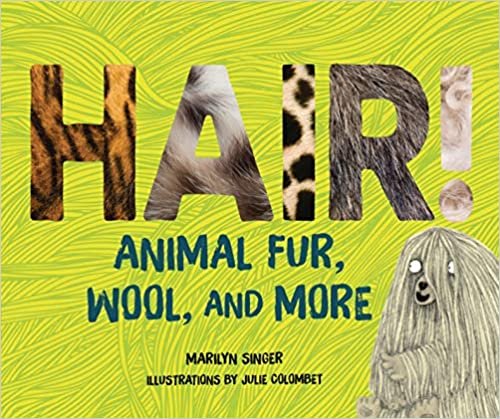An-Animal-a-Month: Creatures Great and Small
Photo credit: Vasiliy Vishnevskiy, Dreamstime.com
I’m kicking off the new year with books featuring a plethora of species rather than just one. I hope your children and students will find their favorite animals and learn something new from these outstanding titles.
Hair – every mammal has it! But do you know all about the different kinds, structures, and functions? Do you know why humans have vibrissae in their nostrils and lanugo hairs all over their bodies before they are born? Or that naked mole rats have hairs? Children will discover all this and much more in Hair! Animal Fur, Wool, and More. Each spread is a beautifully laid out combination of photographs, facts, and humor, from the two illustrated sidekicks. Vocabulary-building words, in bold, are surrounded with context clues and defined in the glossary. Back matter answers more questions, including what causes baldness, what gives hair its color, and what’s the softest animal. A surprising and riveting book to share at storytime or bedtime, and a resource for reports on human and animal hair. Ages 7-11.
Kind of nonfiction: With a narrow focus on hair, a friendly engaging voice in the 2nd and 3rd person, and abundant humor, I’m thinking of this as expository literature. (My categorization using Melissa Stewart’s 5 Kinds of Nonfiction.)
Ties to Next Generation Science Standards:
4-LS1-1 (Construct an argument that plants and animals have internal and external structures that function to support survival, growth, behavior, and reproduction.) Throughout the book, find myriad examples of how hair helps animals survive and reproduce.
Page 4 shows how the fine hairs and waxy coating on human fetuses protect them from their watery surroundings.
Pages 8-9 show fur insulating adult and baby animals from the cold.
Pages 12-13 explain how guard hairs shield the undercoat from rain and snow, and also camouflage prey from predators. Examples include the coloration of skunks, deer, giraffes, and zebras.
Page 12 also explains how the guard hairs of porcupines are quills that provide an excellent defense.`
Page 21 details the protective and communicative functions of eyelashes and eyebrows.
Readers will see the role of a lion’s male in attracting a mate on page 23.
Even the naked mole rat has about 100 hairs to help it sense its dark, underground environment, page 26.
Page 30 shows how whiskers help sense objects and help with balance, while our own nose and ear hairs keep dust, dirt, and bugs at bay.
Not all teachers have two legs and write on SMART boards! In this list book, Sy Montgomery shares lessons from a life spent studying and writing about animals, both wild and tame. Her teachers include a spider, a pig, emus, gorillas, sharks, and hyenas, to name a few. The lessons range from bravery and patience to forgiveness and trust. Sy’s text encourages young readers and listeners to go out into the world, to watch, to listen, to find special teachers of their own. The colorful illustrations help to convey the rich variety of habitats and Sy’s relationships with the animals. This book is a clear, joyful distillation of the author’s adult memoir How To Be a Good Creature (I loved this book too). Ages 4-8.
Kind of nonfiction: Narrative – a first-person account of lessons the author learned from animals. This book was shelved with fiction at my local library, but I believe it’s nonfiction – nothing made-up. Where is it shelved in your library? WorldCat lists it as nonfiction. (My categorization using Melissa Stewart’s 5 Kinds of Nonfiction.)
When scientists, citizens, the government, and other organizations work together, there is reason for hope! Using a first-person narrative style, author Nancy F. Castaldo takes the reader along as she investigates seven species saved from extinction (whooping cranes, wolves, bald eagles, giant Galapagos tortoises, California condors, American alligators, and buffalos). Each chapter details one of the animals, its role in the environment, the reasons it came to be endangered, and the efforts to save it. Each chapter is a story of hope and a call to action. Numerous sidebars relate a few more species, key people, key legislation, and more. Taken together, the chapters show how much humans imperil fellow animals but also how humans have the power and dedication to save them. An engaging read for pleasure or for school reports on any of the animals or on conservation. Ages 10-12.
Kind of nonfiction: A mix of narrative text and traditional sidebars. The narrative text immerses the reader in the author’s experience of researching each species, including visits to sactuaries and research centers. (My categorization using Melissa Stewart’s 5 Kinds of Nonfiction.)



